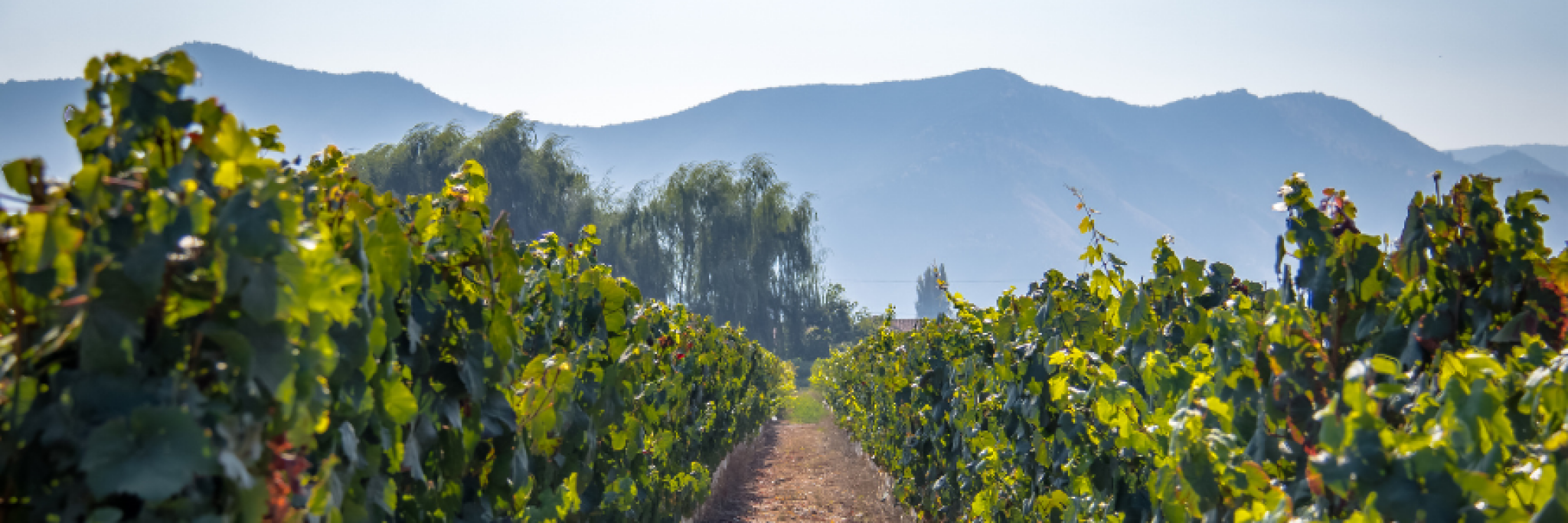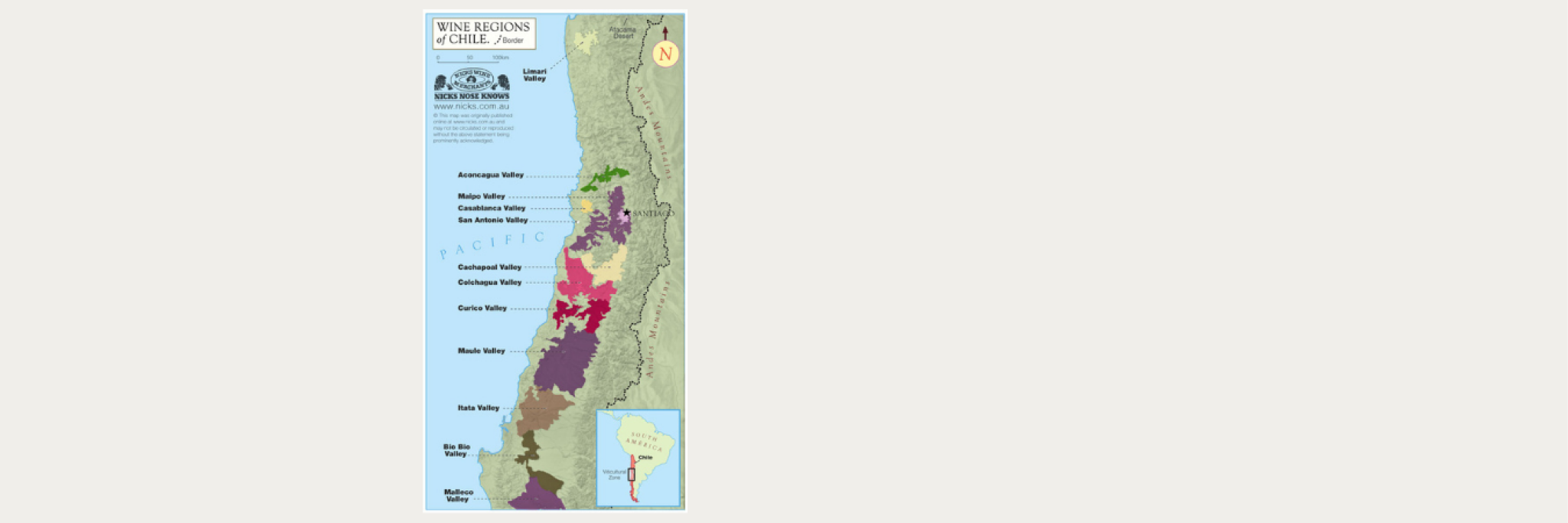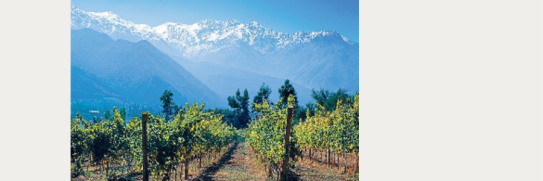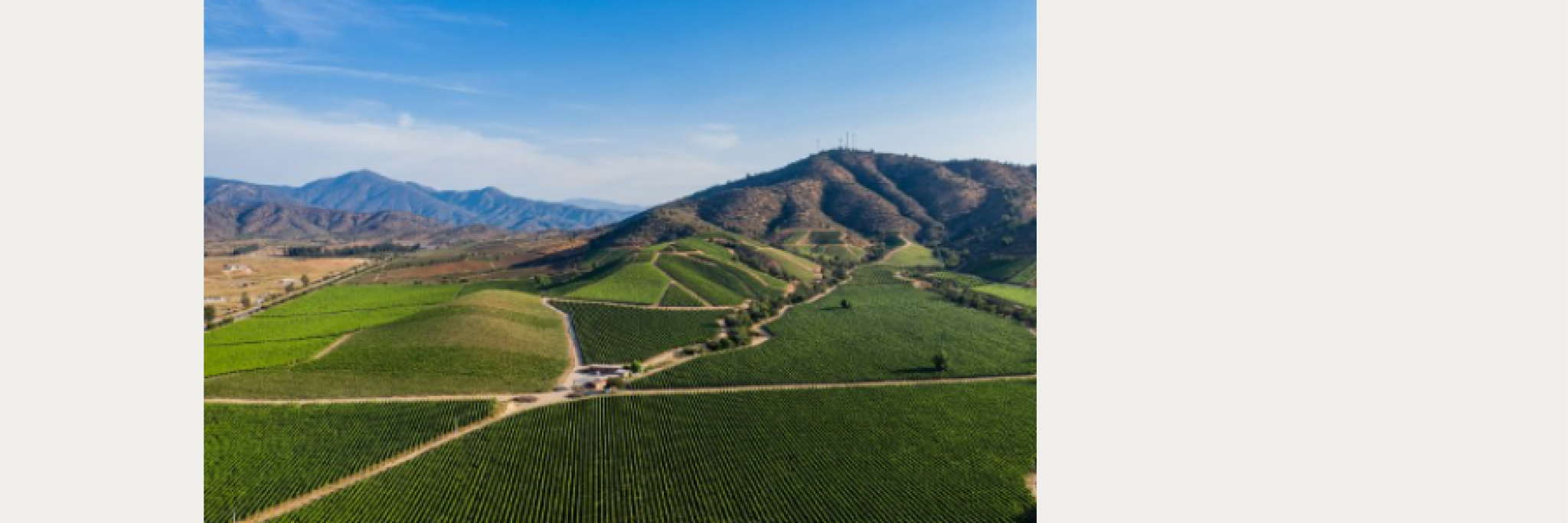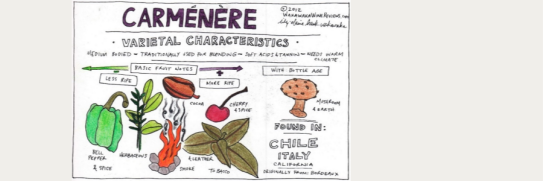Chile is a remarkable country. 2,700 miles long and no more than 110 miles wide it is aptly described by the Chilean poet Pablo Neruda as “this strange sliver of geography”. From the dry and arid Atacama in the far north to the cold and glacial southern Antarctica the country has a smörgåsbord of microclimates and soils which it is only just beginning to realise fully its potential in relation to grape growing and viticultural potential.
Vines date back to the 16th Century in Chile when Spanish conquistadors and missionaries first planted what was then called the “common black grape” which turned out to be the variety Pais and remained the most widely planted grape into the beginning of the 21st Century.
The “modern” wine industry in Chile is, though, 200 years old, but it is in the post Pinochet era (from 1998) that this amazing country has really taken off. Now the 6th largest wine producer in the world today Chile is only just starting to realise its potential – and with such a diversity of regions and microclimates the future for this country is as exciting as any in the world of wine. Chile has long been an important category for Peter Graham Wines and their portfolio offers an exciting and highly diverse range of wines – both by varietal and region. Above all, Chile continues to offer excellent value for money, and I would strongly recommend you consider the following varietals for any mainstream wine list and by the glass offering
- Sauvignon Blanc
- Merlot
- Carmenère (Chile’s “home grown speciality)
Claude aka Claudio Gay - pioneering botanist
The country declared its independence from Spain in 1810; but it was a Frenchman – scientist and botanist Claude(io) Gay – who established the first vine nursery in the 1820s – mainly focusing on Bordeaux varietals. Historically Chile had for centuries relied on the local, workhorse black grape Pais (as mentioned) and the white Muscat, grown as much for the then national distilled spirit drink of Chile – the aptly named Pisco. But by the mid-18th century, though, the country had established a reputation for its table wines from these new varieties.
Unsurprisingly, there was a strong leaning towards red wines and Bordeaux varieties, which is still prevalent today - with 75% of production being red wine. Local Don Silvestre Errázuriz (to this day a famous name in the industry) also started importing French varietals and employed a French winemaker, so momentum built, and the foundation of the Chilean wine industry was defined.
Chile enjoys numerous natural, favourable advantages for grape growing and winemaking. Due to its geographical isolation most vines to this day are still grown on their own roots (most other vines in the world are grafted onto rootstocks to counteract the aggressive nematode pest Phylloxera). The Andes provide a natural and constant source of pure water. The cool Pacific helps to moderate the growing season – especially in the main viticultural Central belt and those regions near the coast – promoting extended ripening and more complex flavours in the grapes. There is an almost complete absence of pests and diseases, so the use of chemicals is kept to a minimum, making many of the vineyards naturally organic. The luminosity of sunlight in Chile is also notable aiding ripeness and purity of varietal expression. The Andes themselves provide scope for producers to use the aspect of altitude to develop cooler climate styles of wine. Despite maybe first impressions that Chile has it “rather too good” and wines were therefore rather homogenous, you would be mistaken.
The Andes are never far away in Chile – here in the Maipo – and a constant, easy source of melted rainwater for irrigation
The heartland of the winegrowing area is between latitudes 30 and 40° south, close to the capital Santiago. Here established regions such as Maipo and Rapel (with contains highly regarded sub appellations of Cachapoal and Colchagua) are sources of some of the finest (Bordeaux style) Cabernet Sauvignon and Merlot red wines in Chile. However, regions to the north such as Aconcagua are challenging hard on the red front, with both Bordeaux varietals, but also the “home grown” ex Bordeaux varietal Carmenère. Some of Chile’s most prestigious and “cult” wines also originate here.
The Curicó and Maule Valleys have less history but have become large and important production areas – quality has been variable, but increasingly better wines are now coming out of both areas. This includes Chile’s local favourite again – Carmenère, but also increasingly individual and well-made old vine Carignan (especially in the Maule).
The leading cool(er) climate areas, to the northwest, are Leyda and San Antonio Valleys (along with the already established Casablanca Valley). Here – with cooling on shore Pacific winds – refined Sauvignon Blanc and Chardonnays are made, and these areas are also seen as having great potential for Pinot Noir. However, leading producers in the Casablanca are also making some elegant Rhône styled reds from the Syrah grape. And watch out for new up and comings areas such as Bio Bio Valley (for aromatic whites, including Riesling) in the south and Limarí(both for whites such as Chardonnay and reds from Pinot Noir and Syrah) in the north. Also, and not to dismiss the home-grown Pais this variety does very well – often blended with the Cinsault grape – in the southern Valley of Itata.
The picturesque, cool climate Casablanca Valley – barely 30 years old as a widely planted area and now a high quality and fashionable growing region
But it is worth finishing with a few words more about Carmenère in the mix of grapes and styles which define Chile today. Chile has made this grape its own – to such an extent that it is being replanted back in Bordeaux and other countries, such as Argentina, are increasing plantings. The paradox was that for long time many wines made from this variety were labelled as Merlot.
Carmenère
This variety came over in the 19th century in the mixed bag of Bordeaux varieties, as it was then an important component in red Bordeaux. Along the way its identity got somewhat lost – or confused – in the vineyard plantings; so much so many believed they were growing, harvesting, and making Merlot. Then Ampelographers (people who scientifically identify varieties) confirmed to numerous producers that they were indeed growing and making Carmenère. The variety has a distinctly different aroma and flavour profile, and I think good examples are the most individual of all reds made in the country. Although used in blends I think it is best enjoyed as a single varietal wine. Top examples are full bodied with rich black fruits, savoury even smoky notes, some herbaceousness, with hints of both dark chocolate and spice. And it does work particularly well by the way with a curry! On a final note (before looking at Peter Graham’s Chile recommendations) plantings of Carmenère are now increasing again in Bordeaux – especially in “right bank” areas such as St Émilion. I think it is a must in your mix of wines in the Chile or fuller bodied sections of your wine list.
Peter Graham Wines – Chile Highlights & Recommendations
Peter Graham have long championed the Chile category and today have 29 different wines in that section, from nearly every main growing area. I have highlighted a selection of these below.
Chile does especially well with the Merlot grape which can make for an attractive, fruity medium bodied house red and by the glass option. Adobe is the largest and most focused Organic wine producer in Chile and their Casablanca Valley Organic Chardonnay highlights the cool climate effects of this region. There is a neat and lighter bodied Pinot Noir from the rising star cooler region of Limari from Tabali and their exotic Viognier captures all the bright stone fruit flavours associated with this grape.
And do try the off dry and citrus Riesling from Novas and the Bio Bio Valley – again another organic example. This is a perfect, crisp and fruity summer white. The Carmenère is from leading Spanish house Torres (and the Maule region) who have been long established in Chile and captures all the black fruit and spice notes which makes this variety so interesting. Many of the wines below are also vegan and vegetarian friendly – please check the links for that information.
https://petergrahamwines.com/p/20-organic-merlot-adobe
https://petergrahamwines.com/p/19-cabernet-sauvignon-gran-reserva-novas
https://petergrahamwines.com/p/18-pinot-noir-special-reserve-tabali
https://petergrahamwines.com/p/19-viognier-tabali
https://petergrahamwines.com/p/torres-andica-carmenere
https://petergrahamwines.com/p/21-chardonnay-adobe
https://petergrahamwines.com/p/20-riesling-novas-gran-reserva


